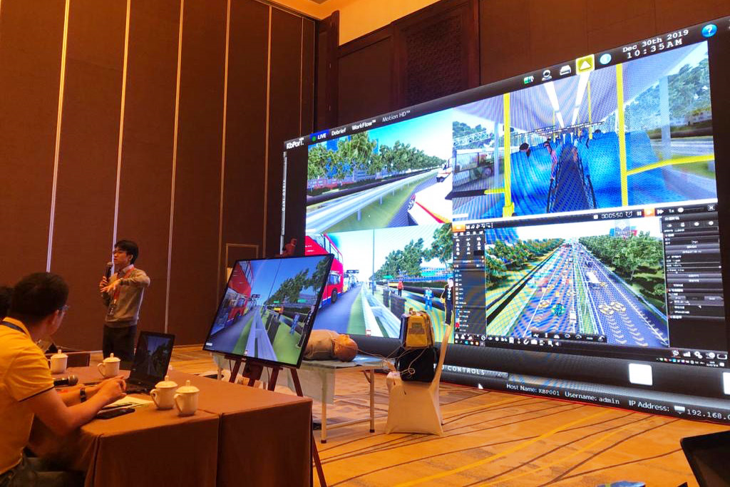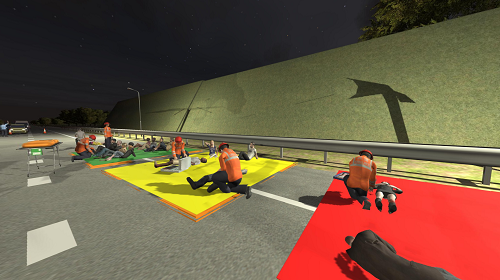Exploring the Elements of Orientation and (Pre)Briefing in Simulation Based Learning Design

I want to explore a little bit about orientation and (pre)briefing(s) associated with simulation based education design concepts. The words are often tossed about somewhat indiscriminately. However it is important to realize they are both important elements of successful healthcare simulation and serve distinct purposes.
When we look in the Healthcare Simulation Dictionary, we find that the definition of Orientation is aligned with an overview preparation process including “… intent of preparing the participants.” Examples include center rules, timing and the simulation modalities.
On the other hand, according to the same dictionary the definition of the word Briefing includes “An activity immediately preceding the start of a simulation activity where participants receive essential information about the simulation scenario….”
I look at orientation as the rules of engagement. I like to think of orientation linked to the overall educational activity in total. Some essential components include orientation to the simulation center, the equipment, the rules, and the overall schedule for the learning activity.
At a somewhat deeper level of thought I think the orientation is linked to the learning contract. What do I mean by that?
I think it is essential that we as the faculty are establishing a relationship with our learners and begin to establish trust and mutual respect. To that end, we can use orientation to minimize surprises. Adult learners do not like surprises!
We need to have the adult learner understand what they can expect. I always orient the learners as to what will feel real, and I am similarly honest with them about what will not feel real. If they will be interacting with a computerized simulator for example, I orient them to the simulator before the start of the program.
In the simulation world we throw around words like debriefing, scenario and task training. To clinical learners these terms may be unfamiliar, or have different contexts associated with them. This for example, can cause anxiety and during the orientation we need to walk them through the experience they are about to embark upon.
Some factors can influence the amount and depth of the orientation. Variables such as the familiarity your participants have with simulation, your simulation center, and your simulation-based encounters. For example, learners who come to your center on the monthly basis probably need less total orientation than those who are reporting for the first time. Learners familiar with the fact that debriefings occur after every simulation may already be acclimated to that concept, but people coming to the sim center for the first time may not be aware of that at all.
Participants just meeting you for the first time they might need a little bit more warming up and that an come in the form of orientation. Overall though it is not just about telling them what’s going on, as it is using the opportunity toward earning their trust and confidence in the simulated learning encounter(s) and the value associated to them as a professional.
BriefingGraphic3Switching the focus to the brief, briefing or (pre)briefing. The briefing is more linked to the scenario as compared to the orientation. The briefing should focus on the details of the case at hand introducing components of information that allow one to acclimate to what they going to need to accomplish during the simulation. What is their role and goals in this scenario they are about to embark upon? If you are going to ask people to play different roles then they are in real life, it is very important that this fact is crystal clear in the briefing.
I think that the briefing should also bring the context to the healthcare experience. It is important to orient the learner for the impending encounter what they are to perceive and think of as real as they are experiencing what is in the simulation. You as a simulation faculty may think that it is obvious that a room in your simulation center is an ICU bed. The participant may not and deserves clarity prior to the start of the simulation so they do not feel like they are being tricked or duped. During the briefing the statement “You are about to see a patient in the ICU…..” can remove such ambiguity.
Another critical briefing point is to clarify the faculty-student engagement rules that should be expected during the scenario runtime if it was not covered in the orientation. There are many correct ways to conduct simulation scenarios. There are varying levels of interaction between faculty members running the simulation and the learners that are participating. This should be clarified before the scenario starts.
For example, are you going to let the learners ask questions of the of the faculty member during the simulation? Or not? This should be upfront and covered in the briefing, and perhaps even aspects of that in the orientation.
While not a requirement I think that parameters associated with time expectations are always good to give in a briefing. For example stating “You are going to have 10 minutes in the scenario to accomplish X,Y and Z, and then we will have a ten minute debriefing before the next scenario.”
Remember our adult learners don’t like surprises! I always use the briefing before a scenario to remind the participant(s) that afterward we are going to have a debriefing. I remind them of that so that they know that they should collect her thoughts and ideas and be ready to have this discussion. Secondly, I am saying in any unspoken way, that if they are uncomfortable about something, or have questions, that there will be an opportunity for discussion during the debriefing. (In other words, your sort of giving some control back to the learner…. Helping to build the trusting relationship.)
Some of the variations of the briefing are similar to that of the orientation mentioned above. People who are more familiar to simulation, your particular programs, your style, may require slightly less of a briefing than others. Additionally, if you are running multiple scenarios as part of a simulation-based course, after the first couple of scenarios you will find that the briefing can be shortened as compared to the beginning of the day.
So, in summary, orientation and briefings are different elements of simulation-based learning that are useful for different things that will contribute to the success of your simulations.
Think of orientation linked to the bigger picture and the learner contract that contributes to making the relationship comfortable between the participants and the faculty. The orientation is the rules of engagement and orientation to the technology and being explicit as to what is to be expected of the participant. Think of the briefing as linked more to the scenario roles, goals, and introduction to patient and environment information to help the participant mentally acclimate to what they are about to dive into.
Dr. Paul Phrampus (May 7, 2020). Exploring the Elements of Orientation and (Pre) Briefing in Simulation Based Learning Design. Simulating Healthcare. Retrieved from https://simulatinghealthcare.net







Responses